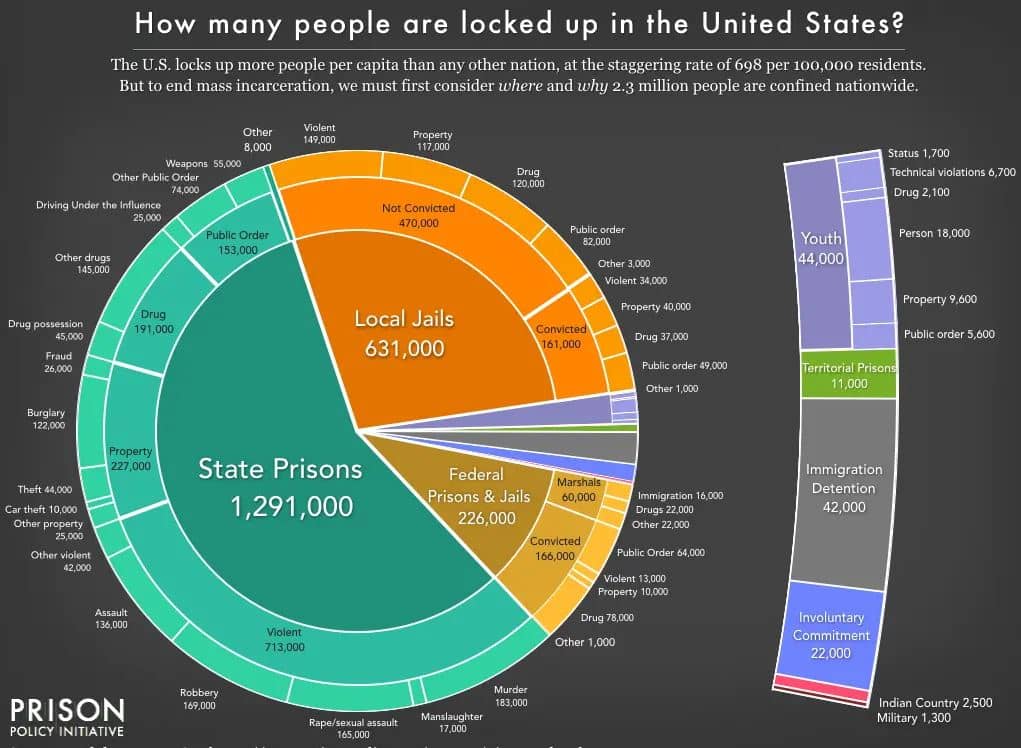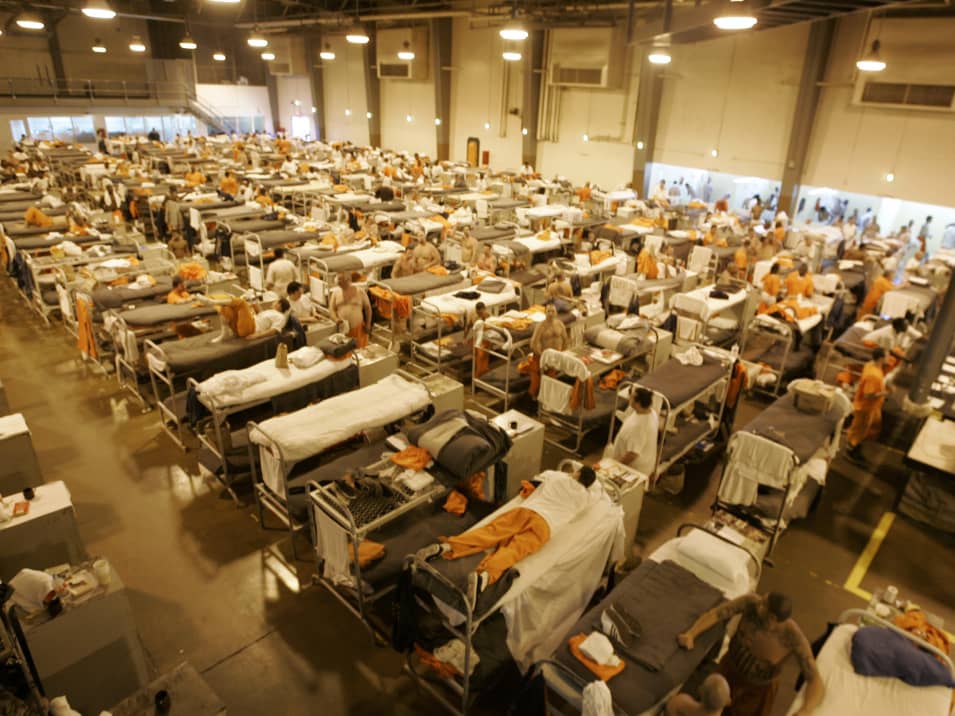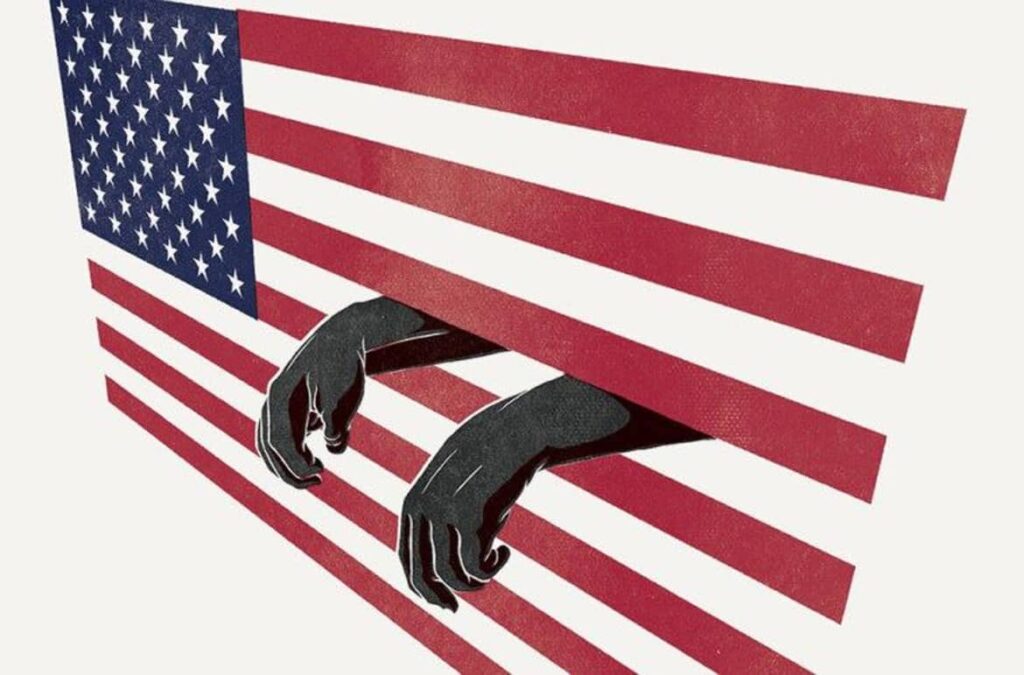“The US has the largest prison population in the world. The country with one-twentieth of the world’s population has one-fourth of it in jail.”
~ Randall Robinson
25% of the global prison population resides in the United States despite the fact that only one-twentieth of the total world population resides in the country. The history of mass incarceration in the United States is long and messy and, oftentimes extremely racist. Its origin stems from the retribution by southern states when slavery was abolished in the 19th century. The term ‘mass incarceration’, however, was coined in the latter half of the 20th century when the US prison population experienced an unprecedented boom soon after Ronald Reagan’s ‘war on drugs’, which was designed as a vengeance on the black communities for the desegregation movement which took place in the 60s. According to the data taken from the Brennan Center for Justice, the US prison population doubled during Reagan’s presidency and touched 627,000 when he left office in 1988.

The incarcerated population in the US has increased by almost 700% since 1970. Part of this is because of the unfair and disproportionate imprisonment of people of color during Reagan’s administration. Even today these statistics are skewed in the favor of the white population. According to the American Civil Liberties Union (ACLU), one in every seventeen white boys might go to jail. The statistics for the colored communities paint a much more grim picture. One in every six Latino boys and one in every three black boys will end up in jail at least once in his lifetime. A further section of the report read that there are 2.3 million people in the US prisons today. This is a statistic that far outpaces both population growth and crime rates.
According to the Prisoner Policy Initiative (PPI), US citizens and immigrants go to jail 10.6 million times per year. Out of this humongous number, only 600,00 enter prison. This means that a huge chunk of the jail population isn’t even convicted of any crime. These people are usually the ones who cannot afford to pay bail and are therefore detained until their court dates which could be weeks, months, or even years away. There are a lot of negative implications on a detained person’s life, especially when they are locked up without conviction. They are locked up, time isn’t.
As time goes by, without any real decision on their case made, the detainees often lose their jobs, homes, and in some cases even their families. All of this just because they were arrested and were unable to pay bail. The bail system is a perfect example of a system created for all the right reasons being used for all the wrong ones. According to the ACLU, the cash bail system was created to make sure that the accused returns to the court as the case progresses, but now has “morphed into a for-profit system of wealth-based incarceration.”

Another important question raised by many activists is about one’s life after prison or jail time? A large number of people return to their homes and communities after serving their time in prisons and life for them does not suddenly turn into a bed of roses. As is depicted wonderfully in Frank Darabont’s The Shawshank Redemption, Brooks Hatlen’s tragic demise is a devastating example of how life after a long stint in the prison can turn out to be. Hatlen had served in jail for 5 decades and even after getting his freedom was unable to enjoy it. The world he left and the world that greeted him after prison were two very different worlds. His life had passed him by, taking away his friends, his family, and his comfort. Hatlen’s catastrophic end is one of the two most common ways that the pendulum could swing.
The other way, which is the more difficult one, is adjusting. Adjusting to new technologies, communication methods, and even small things like new ways of grocery shopping. There are new norms, new slang, and new ways of thinking. What may have been considered a joke in their pre-prison life could now be a surefire way of going back to jail. In addition to all of this, the law for these people is not very friendly. With over 50,000 federal, state, and local legal restrictions, these people who just left one cage begin to think of the world as another gilded, and more judgemental cage that they often feel the urge to break away from.
Formerly incarcerated folks seldom have money to fall back on even for basic survival and often fall into a pit of debt. With all the prejudices the people have against them, it makes it difficult for them to even have a job. Over 75% of former prison inmates remain unemployed even after a year of freedom.

These “collateral consequences” inadvertently end up contributing to the re-arrest of the recently free folk. They are denied employment, training, healthcare, education, and most other means of reintegrating them back into society, thus re-inserting them into the prison cycle once again. At least 1 in 4 formerly incinerated people end up going to jail within the same year. These people are often dealing with mental illness, poverty, and substance abuse disorders, and end up in a worse state than before after being re-incarcerated
An important fact to note here is that most people who are reincarcerated are not reincarcerated for a new crime, but for technical violations of their parole. The ACLU has also reported that people of color, especially black people, are liable to face higher pre-trial detention than their white counterparts. The Black Americans are the most policed group in America. They make up about 13% of the US total population but about 40% of its incarcerated population.
The worst part about all of this is that the prison system of the United States of America costs its taxpayers $80 billion every year. This money which could have been used to better the lives of incarcerated people is being used to push them back into prison, oftentimes without conviction. This money could be invested in other methods of crime control. Putting a huge amount like this into community-building programs like rehab, comprehensive education centers, etc, has the power to lower crime rates at a faster and more efficient rate than incarceration.
Written by- Aditi Dixit
Edited by- Ubai Sura
